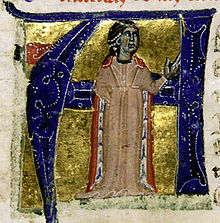Review
Provençal poet. Born around 1140, she seems to have had court in Die. She loved and wrote about love for the great troubadour Raimbaut of Orange. Her compositions stand out for their quality and singularity. Her poetic voice is gallant, daring and authoritative, with many features in common with the Andalusian poets, her contemporaries and with the singular voice of Eloise of Paraclete.
Justifications
- The work of Countess of Die is a paradigmatic example of cultured or troubadour lyric poetry.
- Her work made a notable contribution to the development of troubadour poetry through the cultivation of genres such as the sirventes, the canso and the tenso.
- The content of her work is unique for the way in which she gallantly expresses her yearnings and feelings, as well as her awareness of her own merit.
- This trobairitz also created the musical accompaniment for her narrative compositions. She is, therefore, a clear exponent of the so-called profane monody.
Biography
Provençal poet born around 1140 AD. She seems to have had a court in Die. We do not know much about her life. She may have been William of Poitiers' wife. She loved and wrote about love for the great troubadour Raimbaut of Orange. Her compositions are remarkable for their quality and singularity. These poets used to compose music to accompany their poems. This music belongs to the civil monody. Countess of Die is the only poetess whose original music, composed by herself to sing a poem, has survived.
She is a trobairitz who, from the clichés of courtly love, manages to give the expression of feminine feelings an unusual gallantry and freshness, as well as authority and awareness of her own merit. Five works have survived: four "cansó" and one "tensó", inspired by love feelings.
Martinengo, Marirì (1997). Las Trovadoras, poetisas del amor cortés. Traducción: Rivera Garreta, Mª Milagros y Mañeru Méndez, Ana. Madrid: Hora y hores.
https://www.mujeresenlahistoria.com/2013/01/la-trovadora-beatriz-de-dia-1140-1175.html (13/01/2022)
Works
- Ab joi et ab joven m'apais
- A chantar m'er de so qu'ieu non volria
- Estât ai en greu cossirier
- Fin ioi me don'alegranssa
Bibliography
BADIA, Alfred Les trobairitz. Poetes occitanes del segle XII, 2007, Horsori, Barcelona.
Martinengo, Marirì (1997). Las Trovadoras, poetisas del amor cortés. Traduction: Rivera Garreta, Mª Milagros y Mañeru Méndez, Ana. Madrid: Horas y hores.
Rivera Garreta, M.ª Milagros. “Las trobairitz: maestras del amor y la política en lengua materna” in Duoda. http://www.ub.edu/duoda/web/es/textos/1/245/ (13/01/2022)
Ferrer Valero, Sandra (2013). La trovadora, Beatriz de Día. https://www.mujeresenlahistoria.com/2013/01/la-trovadora-beatriz-de-dia-1140-1175.html (13/01/2022)
«A chantar m'er de so q'ieu no volria», The only poem by the Countess of Die whose original music has been preserved, https://youtu.be/m2B00v5pD3k (17/06/2023).
«Les trobairitz» dins de Troubadours and European Identity: The Role of Catalan Courts http://www.trob-eu.net/ca/les-trobairitz.html (17/06/2023).
Didactic approach
She can be introduced in different subjects:
Spanish language and literature, when studying courtly love in the Middle Ages.
Valencian language and literature, when studying courtly love in the Middle Ages and as a referent for other Catalan trobairitz such as the Queen of Mallorques.
Music, as an example of medieval profane monody, together with the exemplification or activities of other male and female troubadours. «A chantar m'er de so q'ieu no volria» It is the only poem by the Countess of Die whose original music has been preserved: https://youtu.be/m2B00v5pD3k (17/06/2023).
History, in the medieval cultural sphere, with the splendour of female creation in the 12th century.
Universal Literature when dealing with troubadour poetry.
The general context of the 12th century is that of a female renaissance and we find important figures such as the polymath Hildegard of Bingen or the scientist Trotula of Salerno in Italy.
Documents
